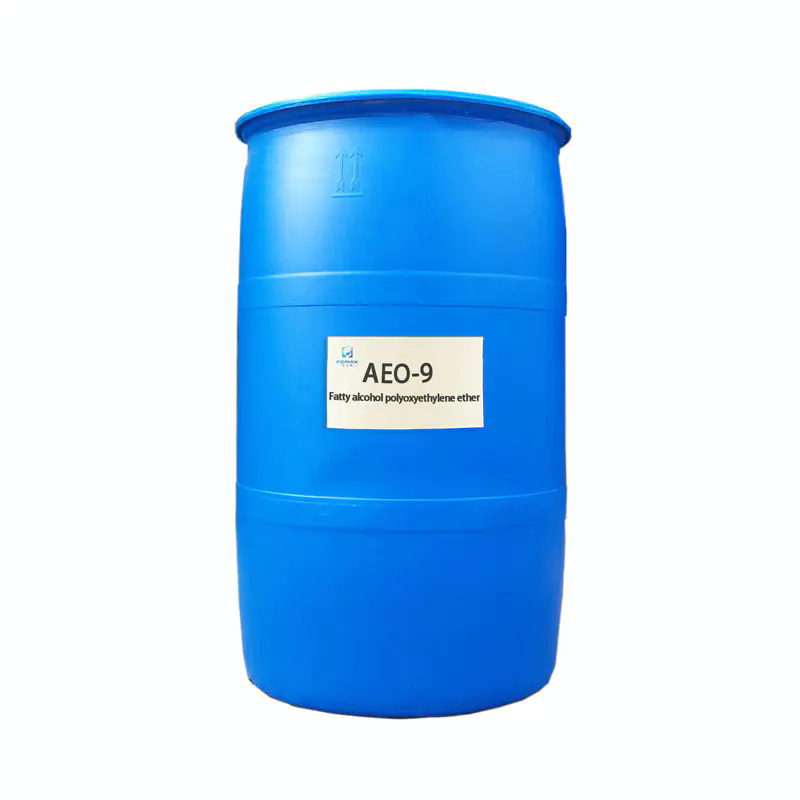Understanding Non-Ionic Surfactants: Properties, Applications, and Benefits
2025-02-06
Surfactants are essential in many industries, from household cleaning products to industrial formulations. Among them, non-ionic surfactants are widely used due to their excellent emulsifying, dispersing, and wetting properties. Unlike ionic surfactants, they do not carry an electric charge, making them versatile and compatible with various substances. In this blog, we’ll explore the properties, applications, and advantages of non-ionic surfactants.
What Are Non-Ionic Surfactants?
A non-ionic surfactant is a type of surface-active agent that does not ionize in water or other solutions. Unlike anionic and cationic surfactants, which carry negative or positive charges, non-ionic surfactants remain neutral. Their solubility and functionality are mainly determined by the balance between their hydrophilic (water-loving) and hydrophobic (oil-loving) groups.
Key Properties of Non-Ionic Surfactants
Excellent Emulsification: Helps mix oil and water-based substances.
Good Compatibility: Works well with other surfactants, including anionic and cationic ones.
Low Foam Formation: Ideal for applications where minimal foaming is needed.
Stable in Hard Water and pH Variations: More resistant to water hardness compared to ionic surfactants.
Mild and Non-Irritating: Often used in personal care and cosmetic products.
Common Applications of Non-Ionic Surfactants
1. Household and Industrial Cleaning
Non-ionic surfactants are widely used in detergents, dishwashing liquids, and industrial degreasers. They help break down oils, grease, and dirt, making them effective for both household and commercial cleaning applications.
2. Personal Care and Cosmetics
Due to their mildness, non-ionic surfactants are found in shampoos, body washes, and skincare products. They help create a smooth texture and improve the stability of formulations.
3. Agriculture and Pesticides
Non-ionic surfactants are used in pesticides and herbicides to improve the spreading and absorption of active ingredients on plant surfaces, increasing their effectiveness.
4. Paints and Coatings
In the paint and coatings industry, non-ionic surfactants help disperse pigments evenly, preventing clumping and enhancing color consistency.
5. Food and Beverage Industry
Certain food-grade non-ionic surfactants serve as emulsifiers in processed foods, helping mix ingredients that would otherwise separate, such as oil and water.
6. Textile and Leather Processing
Used in dyeing and textile treatments, non-ionic surfactants improve the wetting and penetration of dyes, ensuring uniform coloring and fabric treatment.
Advantages of Non-Ionic Surfactants
Versatile: Can be used in a wide range of formulations.
Compatible: Works well with other surfactant types.
Stable: Resistant to water hardness and pH changes.
Low Foam: Suitable for low-foam applications such as industrial cleaning.
Biodegradable Options Available: Some non-ionic surfactants are eco-friendly and biodegradable.
Conclusion
Non-ionic surfactants play a vital role in many industries due to their excellent emulsifying, wetting, and dispersing properties. Whether in cleaning products, cosmetics, agriculture, or industrial applications, these surfactants provide versatility, stability, and efficiency. As technology advances, the demand for eco-friendly and biodegradable non-ionic surfactants continues to grow, paving the way for more sustainable solutions in various industries.



